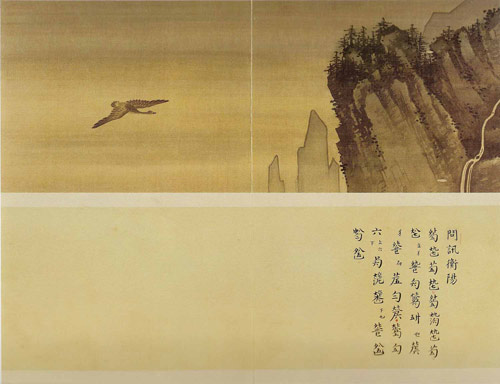|
T of C
Home |
My Work |
Hand- books |
Qin as Object |
Qin in Art |
Poetry / Song |
Hear, Watch |
Play Qin |
Analysis | History |
Ideo- logy |
Miscel- lanea |
More Info |
Personal | email me search me |
| Silk Zither Dreams Other areas Performance Themes My Performances My Repertoire | 首頁 |
|
Chu Region
Melodies connected to the old state of Chu |
楚
問訊衡陽 Asking News of Hengyang, in Hunan; from Qiu Hong |

The ancient kingdom of Chu once included a large region of central China, especially what are today's Hunan and Hubei provinces. Here the Yangzi, Han and Xiang rivers emerge from the mountains of western and southern China. Sometimes it has rivaled the north and east of China as a center of power and culture. At other times it has been viewed as a place of exile for scholar-officials who were out of favor.
Qin melodies with a Chu connection have some general characteristics. Many use a non-standard tuning, as can be seen from the melodies listed below. Tuning for #1 requires raising the second, fourth, fifth and seventh strings from standard tuning; tuning for #2 requires raising the second, fifth and seventh strings from standard tuning; tuning for #3 to #7 raises the fifth and seventh strings; while tuning for #8 to #10 raises the fifth string. In this they can be contrasted with melodies associated with north and central Asia, which generally seem to use the Yellow Bell Tuning.
#15 Geese Descend on a Sandbank, which is very popular today, and #16 Geese Arrive at Hengyang both use standard tuning. They seem to be later melodies, but have a similar theme to #1.
Most of these melodies with non-standard tuning have themes found in the Songs of Chu (Chu Ci), a collection of poetry dating from the Han dynasty. The word "qin" itself acutually occurs in these poems
only once, but many qin melodies in this tuning are attributed to or connected with the famous scholar official Qu Yuan. These all can be interpreted as being laments by scholars at being out of favor with the government or the society in which they live. This theme as found in poetry and painting is discussed in wonderful detail in Alfreda Murck, The Subtle Art of Dissent, Poetry and Painting in Song China.
Since the early Ming dynasty, melodies using non-standard tuning have become less and less common. This might suggest that melodies 1 to 10 here are the earliest. However, Cangwu Lament (#13) is specifically identified in its earliest occurrence (1525) as being tablature from the famous Song dynasty connoisseur Yang Zan.
It is also possible that tunings used here were specifically associated with the old Chu region. However, there are some notable melodies using these tuning which do not have the Chu connection. The most prominent of these is Thrice Parting at Yangguan (Yangguan Sandie), more thematically connected to
Central Asia. Its tuning, originally raised second and fifth, is now raised fifth.
I reconstructed all the qin melodies mentioned here (those with no links are not completed) from Ming dynasty qin handbooks. Many of the melodies can be accompanied by visual images.
)
飛鳴吟 Calling out in Flight
秋鴻 Wild Geese in Autumn
處泰吟 Dwell at the Source; 1525
遠遊 Wander Afar; 1525 (8 images; poem)
楚歌 Song of Chu 1425 (1 image; partial lyrics)
泛滄浪 Floating on the Canglang River; 1425
漁歌 Fisherman's Song; <1491
Compare 天台引 Mount Tiantai Prelude (Tiantai Yin), a standard tuning melody telling a similar story but connected to Mount Tiantai, south of Shaoxing
蒙棘引 Covered Brambles Prelude; 1525
蒼梧怨 Cangwu Lament; 1525
Return to the top or to the Guqin ToC.